The Beat asked team members to share what they are grateful for this year, and many of you responded. As we prepare to go out for Thanksgiving break, all of us at The Beat are grateful for our readers and everyone whose stories we have shared throughout the year.
Tiffany Cathey, Ebby Halliday Elementary School
I thank God for blessing me with the strength to keep moving forward, no matter the challenges. I am grateful for my daughter, whose love and presence bring joy and meaning to my life. I am grateful for my family, the foundation of support and connection that surrounds me. I am thankful for the gift of another day, a chance to live, grow, and embrace new opportunities. I am grateful for my job and for my co-workers at Ebby Halliday Elementary School. I am grateful for the ability to wake each morning with the chance to support and serve others, carrying out the work that gives my life direction and meaning.
Rosa Mendoza-Sosa, L.L. Hotchkiss Elementary School
 As a single mother of an autistic son and a teen daughter who dealt with a mental health crisis earlier this year, this year has been a testament to endurance and strength. I suffered a car accident in May of 2025 that left me without a vehicle and to figure out how I would go on about my daily routines. Then, July 2025 came around. I was excited to begin my second year as a data controller at Hotchkiss when my health took a turn for the worse. I was hospitalized for over two weeks, almost losing my life. I was on FMLA for over six weeks not knowing how I would come out of it. My children, my family, and my support from former DallasISD coworkers and current coworkers showed me such an incredible lesson: Community is key. As a community, we are able to flourish in the midst of the most challenging adversity. From meals being sent to my home, financial donations, and support with daily needs, I slowly graduated from using the walker, to a cane. Although there were some days I struggled, I kept pushing on. Today, I am able to get to wor. Although it takes me over an hour on public transportation to get to my campus, and over an hour to return back home due to still being without a vehicle, that doesn’t stop me. I make sure that in the interactions I have, whether it be with my colleagues or parents or even students, I give a smile and positive attitude. The impact my campus has had on me and the faces I get to see every morning remind me of the beauty that life is and how precious it is. No matter what life may present you with, you must make a choice on how to overcome it. We are meant to triumph in the midst of despair, we are meant to thrive!
As a single mother of an autistic son and a teen daughter who dealt with a mental health crisis earlier this year, this year has been a testament to endurance and strength. I suffered a car accident in May of 2025 that left me without a vehicle and to figure out how I would go on about my daily routines. Then, July 2025 came around. I was excited to begin my second year as a data controller at Hotchkiss when my health took a turn for the worse. I was hospitalized for over two weeks, almost losing my life. I was on FMLA for over six weeks not knowing how I would come out of it. My children, my family, and my support from former DallasISD coworkers and current coworkers showed me such an incredible lesson: Community is key. As a community, we are able to flourish in the midst of the most challenging adversity. From meals being sent to my home, financial donations, and support with daily needs, I slowly graduated from using the walker, to a cane. Although there were some days I struggled, I kept pushing on. Today, I am able to get to wor. Although it takes me over an hour on public transportation to get to my campus, and over an hour to return back home due to still being without a vehicle, that doesn’t stop me. I make sure that in the interactions I have, whether it be with my colleagues or parents or even students, I give a smile and positive attitude. The impact my campus has had on me and the faces I get to see every morning remind me of the beauty that life is and how precious it is. No matter what life may present you with, you must make a choice on how to overcome it. We are meant to triumph in the midst of despair, we are meant to thrive!
Tyler Holloway, W.W. Samuell High School
I am grateful for the opportunity to work each day and change the lives of students. Even if it is only one, I know my job is worth it. As a two-time open heart surgery survivor, I am grateful that God has given me another chance to live and be better than before.
Candy Luna, School of Health Professions at Yvonne A. Ewell Townview Center
I am grateful for how sweet and welcoming my coworkers have been since starting my new position at the school. I started here back in August, and I am so grateful for this team.
Gauranga Robinson, Geneva Heights Elementary School
I am grateful for my awesome team who has supported me in my role change this year. I am also grateful for our amazing students and our wonderful families.
Maria D. Trevino, C.A. Tatum Jr. Elementary School
I am grateful for my family and friends, being healthy and having wonderful children to teach. I am also grateful for the love of family and friends. I am blessed.
Liyah Joseph, Dallas Career Institute East 
I’m so thankful for my incredible health science team! Each of them bring unique strengths, dedication, and heart to everything they do, helping our students grow through hands-on phlebotomy and patient care experiences. I’m grateful for their teamwork, passion, and the positive impact they make every day.

Maria Diano, Seagoville High School
I’m so thankful for the teacher assistants in our SPED Department. Thank you for all you do!
Yolanda Harrell, Young Men’s Leadership Academy at Fred F. Florence Middle School
For my personal development, for my kids, my family and for working with children who are the future of this country!
Suzanne Paiz, Chapel Hill Preparatory 
I’m so grateful for the teachers and staff at my campus who are always willing to lend a hand. Whether it’s providing coverage, helping solve a problem, answering a question they’ve probably heard a hundred times—with kindness and patience—or simply offering a listening ear or a shoulder to lean on, their support never goes unnoticed. Teamwork truly makes the dream work, and that’s so evident every day at CHP!
Samuel Munoz, West Dallas Junior High
Assistant Principal Mary Getty for all the support you have given to the teachers—especially to me—for always going the extra mile with care, dedication, professionalism, and for being a role model during this new experience at West Dallas Junior High.
Rosalind Reece, Wilmer-Hutchins Elementary School
I am so grateful to be in good health, to have a family, to fulfill my call to teach, and to be able to smile no matter what.
LaShuna Anderson, Edwin J. Kiest Elementary School 
This year, I am especially grateful for the wide range of resources we are able to offer through our counseling services. From social-emotional learning materials to community partnerships, mental health supports, and family outreach programs, each resource helps us meet students where they are and provide meaningful, individualized care. I’m grateful because these tools allow us to support students more effectively, create a safer and more connected school environment, and empower young people to grow academically, socially, and emotionally. Having access to these resources and being able to share them with our students, families, and staff makes a real difference every day, and I’m truly thankful for that.
Gabi Paulo, John Lewis Social Justice Academy at Oliver W. Holmes
I am grateful for the staff and students here at our school. Shout out particularly to our principal Monique Paige who has unwavering dedication to the staff and students.
Ryan Michelle Patrick, Martha Turner Reilly Elementary
I am deeply grateful for the support my family receives throughout Dallas ISD. My husband and I are proud educators in the district, and our two children are students here, as well. From the encouragement we receive in our own classrooms to the care shown by the teachers, counselors, TAs, and staff who work closely with our kids every day, we truly feel that our futures—and theirs—are in wonderful hands.
 Janie Reyes, HCM Policy and Compliance PHOTO
Janie Reyes, HCM Policy and Compliance PHOTO
I am grateful for my colleagues. Individually, we are not perfect, we all have our strengths and weaknesses. As a team, we ARE perfect, perfect for each other. We complement each other in many ways through laughter, fun, thoughtfulness, care, encouragement, celebrations, you name it!
Theresa Thomas, George B. Dealey Montessori Academy
I am grateful for my health and strength and thankful for all my blessings this year
Natasha Mitchell, Sunset High School

I am grateful today, truly grateful, for my son and the incredible journey he’s on as a freshman at Texas Tech University. Watching him step into adulthood and chase his goals with confidence has been a blessing, and I know he didn’t get here alone. I’m thankful for the people who poured into him, guided him, and believed in him every step of the way. First, Ms. Blankenship. She was my son’s senior-year English teacher, but to him, she was so much more than that. She checked on him not just about schoolwork, but about him. That consistency mattered to him. It grounded him, encouraged him, and reminded him that he wasn’t walking through senior year alone. She showed him that she genuinely cared, and he felt that. She made sure he knew someone believed in his goals and his future. And as his mom, I’m forever grateful for the way she poured into him at such an important time in his life. I’m grateful for Mr. Spencer, not just as an assistant principal but as a true leadership mentor for my son. When my son served as student body president, he needed a strong male figure he could look up to, someone who led with integrity, confidence, and purpose. Mr. Spencer became that example. He was the open door my son needed: someone he could talk to, someone who listened, encouraged him, and challenged him to grow. He helped my son understand what real leadership looks like at a young age, how to carry himself, how to make decisions, and how to lead with maturity. As a mom raising a young man stepping into leadership, I am beyond grateful that my son had a great male leader like Mr. Spencer to look up to. His guidance made an impact that my son will carry with him into adulthood. And I’m grateful for our superintendent, who attended Teen Board meetings and allowed my son to ask the tough questions, the kind of questions young leaders carry but don’t always get to express. She gave my son space to grow, to think bigger, and to see leadership from a district level. I’m just grateful. Grateful that my son had people in position who pushed him, believed in him, challenged him, and made sure he stayed on track. They helped lay a strong foundation, one that he’s now standing on as he builds his future at Texas Tech.
Gema Guevara, Communication Services
I am grateful for the teachers, staff, and principals who are willing to share their stories with our Internal Communications team. You’re the reason we’re here!
Michele Andy, Charmaine and Robert Price Career Institute South
I’m grateful to work at Career Institute South as a substitute. Director Adrienne Jones has created a family atmosphere at CIS. Substitutes, custodians, support staff, and all educators are valued, appreciated, and celebrated. I absolutely love CIS and the people who work here.
 Adam Bennett, Bond Program Marketing
Adam Bennett, Bond Program Marketing
I am grateful for my incredible wife who makes me a better man. I married WAY up!
Erika Anderson, W.W. Samuell High School
I am grateful for the presence of God in my life, my life, health and strength, my freedom and my family/friends!
Jennifer Perez, Dr. Elba and Domingo Garcia West Dallas STEM School
For myself, I’m grateful for my family, my house, my cats and my friends. For school, I’m more grateful for the partnerships we have in our school. We are so fortunate in having them that we give them Thank you cards every school year before Thanksgiving break!



 “It’s a blessing to be honored. I feel appreciated,” said Areal Chandler, cafeteria supervisor at Mark Twain School for the Talented and Gifted. “I get to interact with my students every day. The children are the best part of my day.”
“It’s a blessing to be honored. I feel appreciated,” said Areal Chandler, cafeteria supervisor at Mark Twain School for the Talented and Gifted. “I get to interact with my students every day. The children are the best part of my day.”




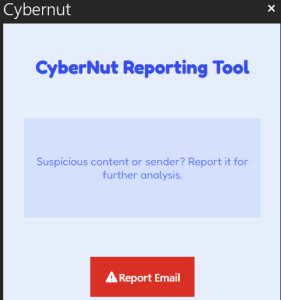 Cybersecurity experts estimate that globally, hundreds of thousands of people fall victim to phishing attacks every year. Phishing is a type of cybercrime where spam messages, generally emails, containing malicious links or files are sent to people to download or click on the link.
Cybersecurity experts estimate that globally, hundreds of thousands of people fall victim to phishing attacks every year. Phishing is a type of cybercrime where spam messages, generally emails, containing malicious links or files are sent to people to download or click on the link. 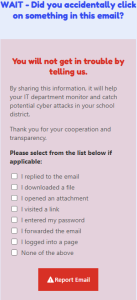

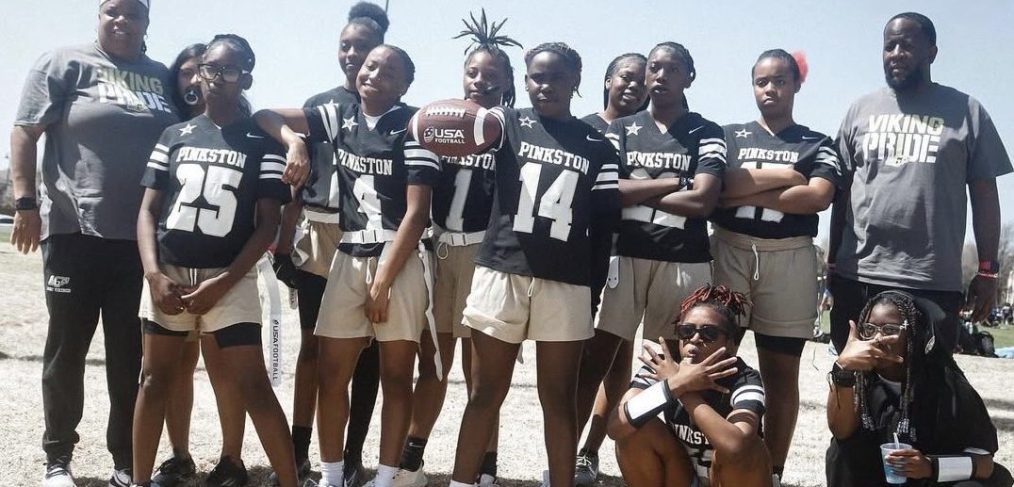
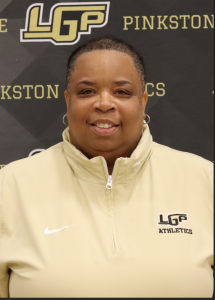

 As a single mother of an autistic son and a teen daughter who dealt with a mental health crisis earlier this year, this year has been a testament to endurance and strength. I suffered a car accident in May of 2025 that left me without a vehicle and to figure out how I would go on about my daily routines. Then, July 2025 came around. I was excited to begin my second year as a data controller at Hotchkiss when my health took a turn for the worse. I was hospitalized for over two weeks, almost losing my life. I was on FMLA for over six weeks not knowing how I would come out of it. My children, my family, and my support from former DallasISD coworkers and current coworkers showed me such an incredible lesson: Community is key. As a community, we are able to flourish in the midst of the most challenging adversity. From meals being sent to my home, financial donations, and support with daily needs, I slowly graduated from using the walker, to a cane. Although there were some days I struggled, I kept pushing on. Today, I am able to get to wor. Although it takes me over an hour on public transportation to get to my campus, and over an hour to return back home due to still being without a vehicle, that doesn’t stop me. I make sure that in the interactions I have, whether it be with my colleagues or parents or even students, I give a smile and positive attitude. The impact my campus has had on me and the faces I get to see every morning remind me of the beauty that life is and how precious it is. No matter what life may present you with, you must make a choice on how to overcome it. We are meant to triumph in the midst of despair, we are meant to thrive!
As a single mother of an autistic son and a teen daughter who dealt with a mental health crisis earlier this year, this year has been a testament to endurance and strength. I suffered a car accident in May of 2025 that left me without a vehicle and to figure out how I would go on about my daily routines. Then, July 2025 came around. I was excited to begin my second year as a data controller at Hotchkiss when my health took a turn for the worse. I was hospitalized for over two weeks, almost losing my life. I was on FMLA for over six weeks not knowing how I would come out of it. My children, my family, and my support from former DallasISD coworkers and current coworkers showed me such an incredible lesson: Community is key. As a community, we are able to flourish in the midst of the most challenging adversity. From meals being sent to my home, financial donations, and support with daily needs, I slowly graduated from using the walker, to a cane. Although there were some days I struggled, I kept pushing on. Today, I am able to get to wor. Although it takes me over an hour on public transportation to get to my campus, and over an hour to return back home due to still being without a vehicle, that doesn’t stop me. I make sure that in the interactions I have, whether it be with my colleagues or parents or even students, I give a smile and positive attitude. The impact my campus has had on me and the faces I get to see every morning remind me of the beauty that life is and how precious it is. No matter what life may present you with, you must make a choice on how to overcome it. We are meant to triumph in the midst of despair, we are meant to thrive!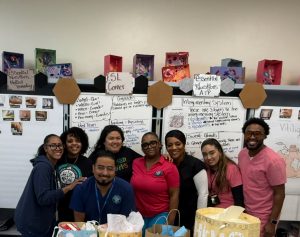
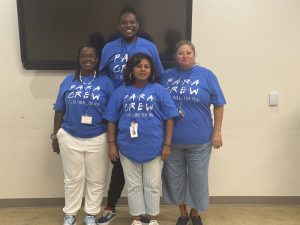


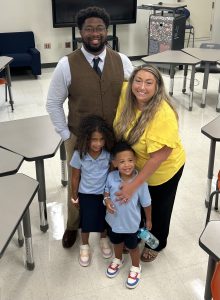
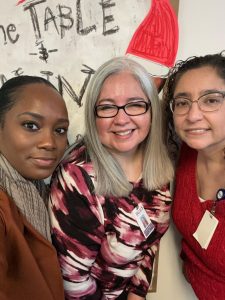


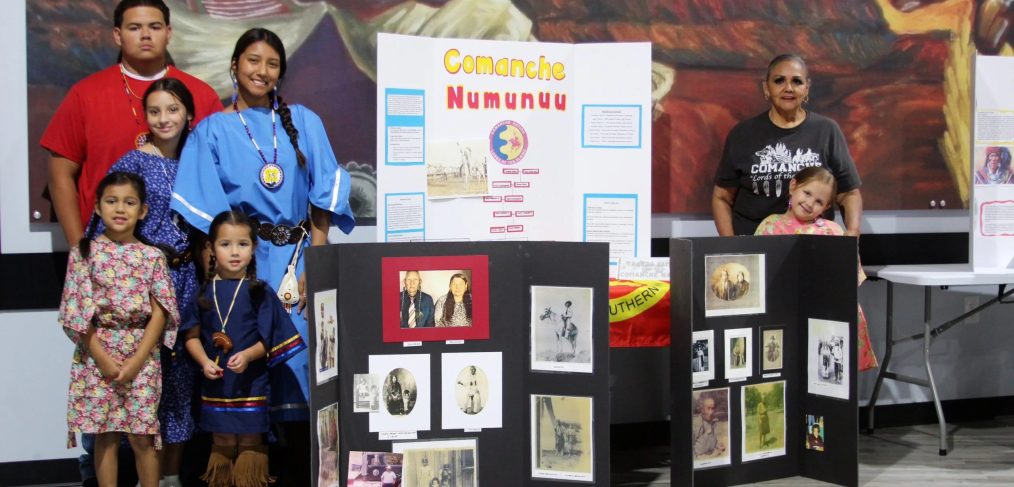
 Those early hands-on lessons at home, learning how to make frybread, wear regalia, and participate in ceremonies with respect and pride, shaped Leah’s sense of self and her commitment to passing them on to her kids someday.
Those early hands-on lessons at home, learning how to make frybread, wear regalia, and participate in ceremonies with respect and pride, shaped Leah’s sense of self and her commitment to passing them on to her kids someday.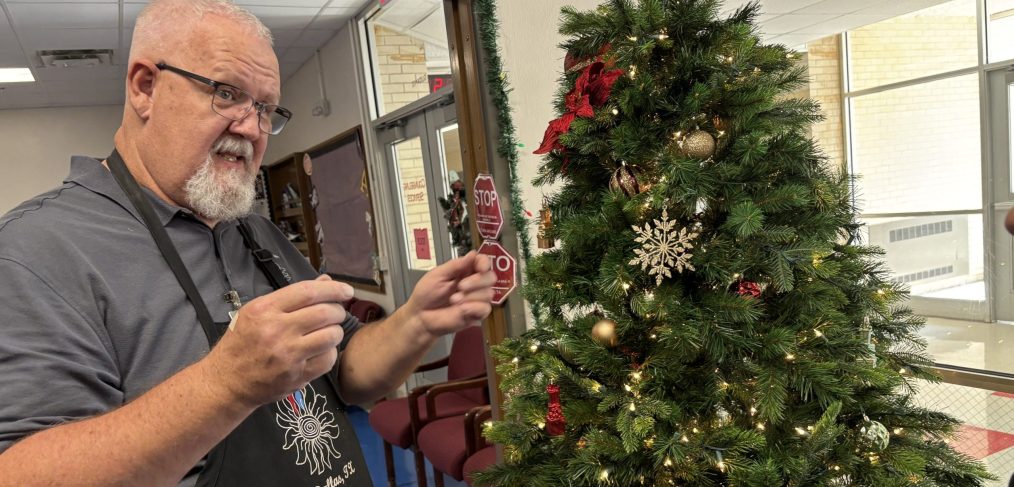
 In one corner of the main office awaited the tree Coyle’s class intended to trim for a special purpose—the giving tree that has been part of the Skyline tradition for about a decade. Inspired by the Salvation Army Angel Tree program, Susan Shinn, a history and psychology teacher, started the Skyline giving tree specifically to support the homeless student population.
In one corner of the main office awaited the tree Coyle’s class intended to trim for a special purpose—the giving tree that has been part of the Skyline tradition for about a decade. Inspired by the Salvation Army Angel Tree program, Susan Shinn, a history and psychology teacher, started the Skyline giving tree specifically to support the homeless student population.
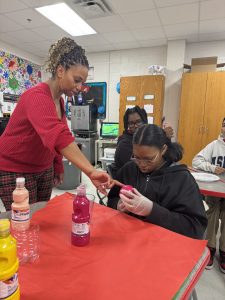 Outside Coyle’s classroom, miniature Christmas trees, each one numbered, were displayed on metal carts and atop reach-in refrigerators. As Coyle’s second-period students—all girls, wearing black aprons and festive headbands–wheeled utility carts filled with boxes and plastic containers of ornaments to decorate the trees, Coyle, a former Marine who served in Toys for Tots, said he also understands how important it is to assist others in tough times.
Outside Coyle’s classroom, miniature Christmas trees, each one numbered, were displayed on metal carts and atop reach-in refrigerators. As Coyle’s second-period students—all girls, wearing black aprons and festive headbands–wheeled utility carts filled with boxes and plastic containers of ornaments to decorate the trees, Coyle, a former Marine who served in Toys for Tots, said he also understands how important it is to assist others in tough times.
